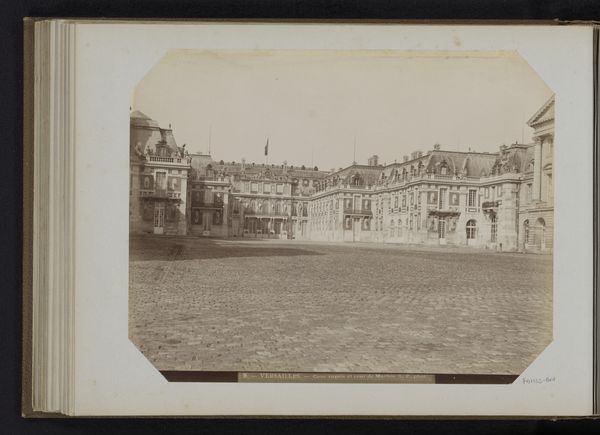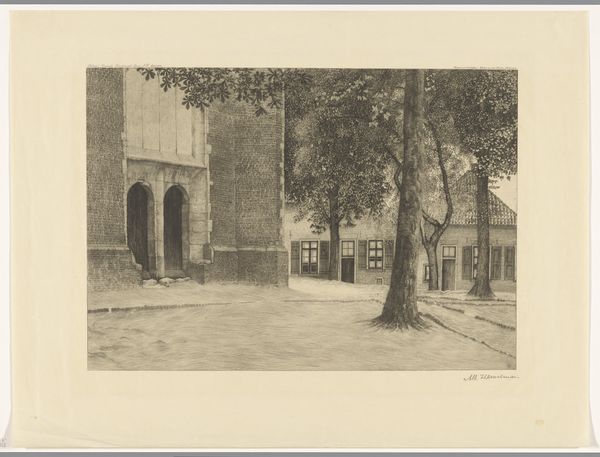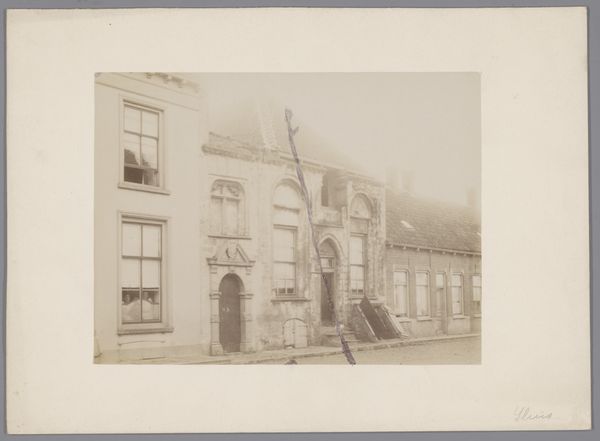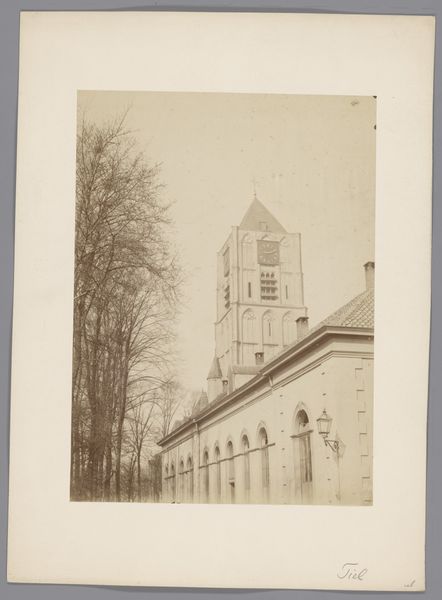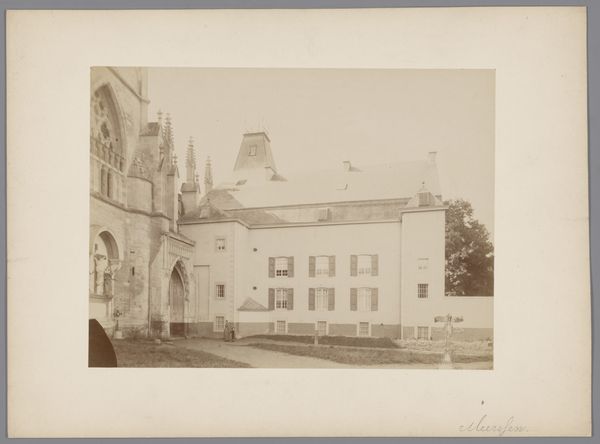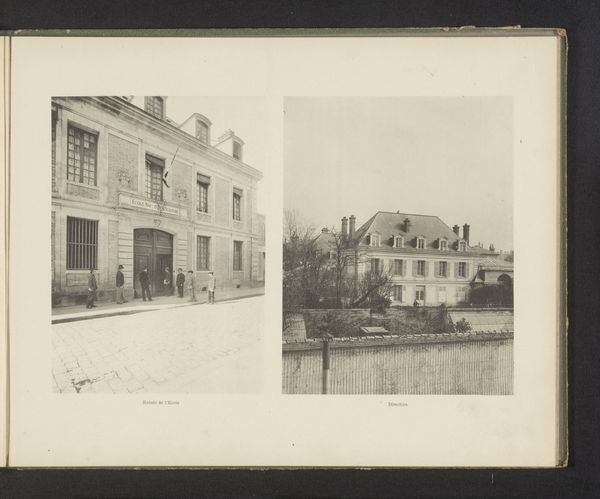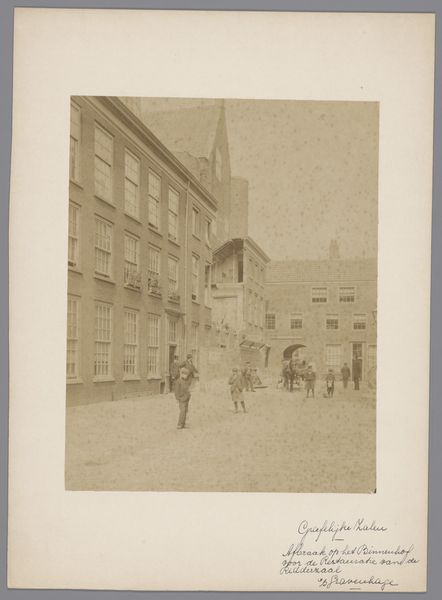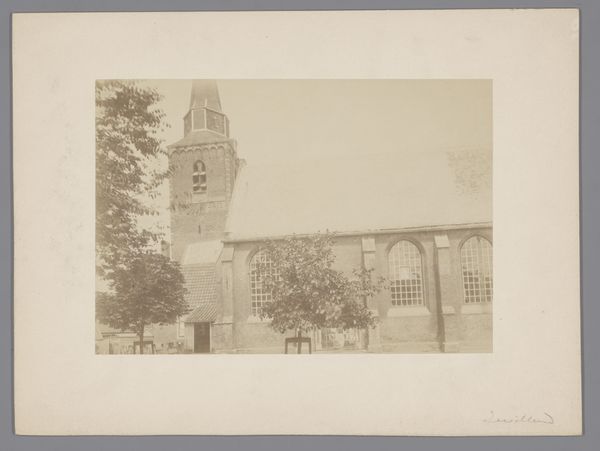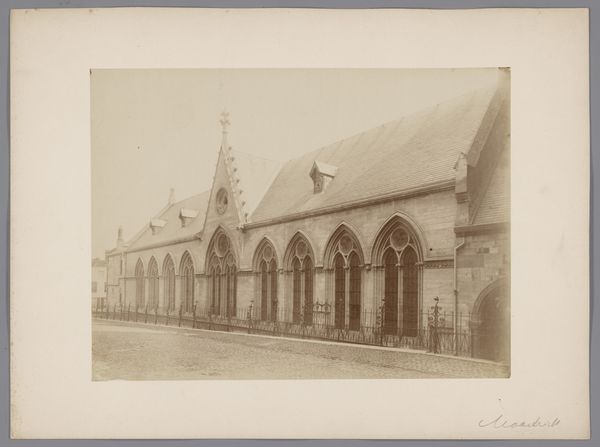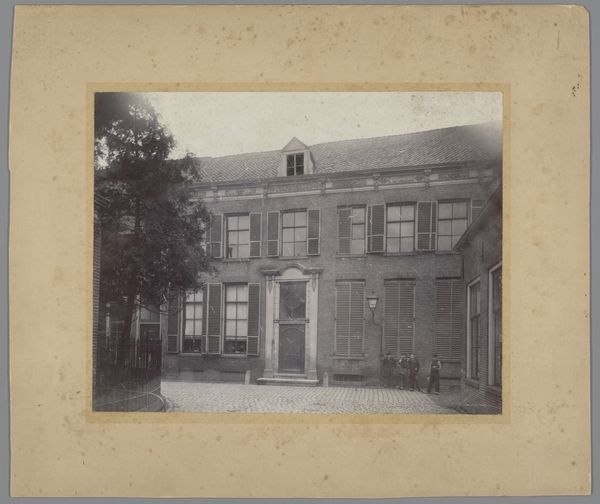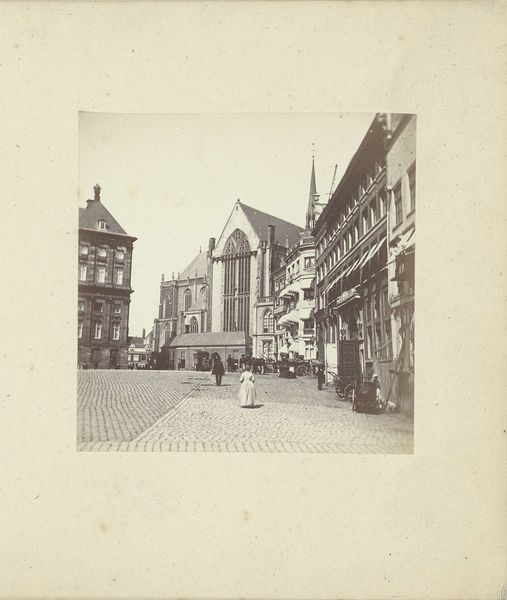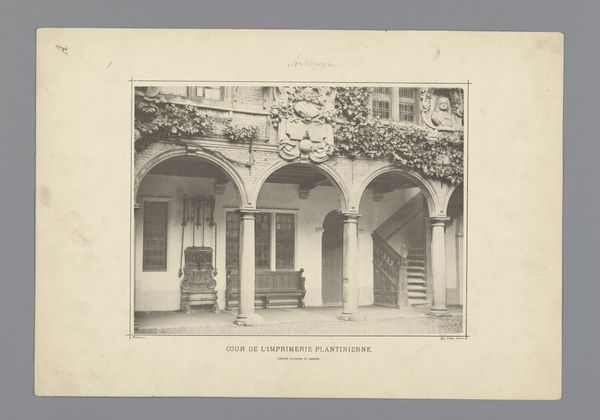
Gezicht op de put en de ingang van het Musée de Cluny te Parijs 1850 - 1900
0:00
0:00
medericmieusement
Rijksmuseum
#
photo of handprinted image
#
aged paper
#
toned paper
#
homemade paper
#
pale palette
#
muted colour palette
#
photo restoration
#
ink paper printed
#
soft colour palette
#
watercolor
Dimensions: height 260 mm, width 345 mm
Copyright: Rijks Museum: Open Domain
Curator: So, here we have a print titled "Gezicht op de put en de ingang van het Musée de Cluny te Parijs," placing us firmly in Paris, likely sometime between 1850 and 1900. It's currently held in the Rijksmuseum. What strikes you first about it? Editor: It has the air of an old memory. It's melancholic. That soft focus and pale sepia wash feels like looking through time itself at this old courtyard. Curator: Absolutely, the toned paper contributes to that sense of nostalgia. The choice of medium reinforces our understanding of how mid-19th century photographers often aimed for their prints to emulate painting styles. Editor: I feel as though the photographer tried to immortalize a quiet little place where people might have once met, and gossiped around this medieval water well, don't you think? I feel a presence even when no one is actually visible in the photo. Curator: The image also reminds us of the transformations in Parisian architecture and cultural institutions during that period. The Musée de Cluny, dedicated to the Middle Ages, stands as a testament to 19th-century interests in preserving and romanticizing the medieval past. This photo helps reinforce the link between visual culture, national identity, and heritage preservation. Editor: Exactly. It’s more than just the building; it’s like capturing the atmosphere of a certain type of cultural ambition—that almost obsessive cataloguing and celebrating of a romanticized past. It makes one consider, though, the power structures at play: who gets to decide what is considered culturally worth remembering, and preserving, at any given time? Curator: Indeed. Museums are never neutral spaces, and their collections reflect specific socio-political forces, ideas about art, and ideologies prevalent in their own moment of establishment and institutional life. Editor: True! It’s fascinating how the deliberate choice of antiquated printing techniques contributes to its symbolic dimension too! I feel strangely calmed but at the same time intellectually piqued after contemplating it! Curator: Ultimately, Mieusement’s image serves as both an artwork and a historical document, giving us much to consider on photography, time, memory and national heritage!
Comments
No comments
Be the first to comment and join the conversation on the ultimate creative platform.
